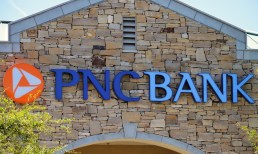If there’s any industry that has been slow to transition online, it’s antiques. It’s the nature of the business that before someone spends a fair amount of discretionary income on a painting, jewelry box or grandfather clock, they typically want to see and touch it first. But a confluence of factors, including the shelter-in-place measure of the COVID-19 crisis, is changing that. Two recent moves from leading arts and antique dealers are leading a trend toward online arts and antique buying.
“I’d say at the beginning of the year, a third of our business was online, with the rest coming through our storefront,” says Dwight Steffenson, proprietor of Solvang Antiques near Santa Barbara, California. “Now we’re going to take a smaller storefront and concentrate more online. Part of that is due to the lack of foot traffic. But it’s also a function of the improvements in photography that let people get a better look at what they’re buying. We’re finally knocking down the barriers online.”
Solvang has had a big storefront for 43 years. Its business has included a wide variety of antiques, including Victrolas, clocks, music boxes and jewelry. The advent of digital photography has helped Steffenson’s cause, along with shipping policies and the ability to hold purchases in escrow. All sales are now online, although appointments can be made to see bigger and more expensive items.
At one level, the online transition has removed one of the West Coast’s premiere antiques locations and a stop from many tourists’ itineraries. On the other hand, Solvang’s inventory can now reach a global audience. In fact, many of the company’s best customers are from China.
“We do print ads locally, and we have a newsletter that goes to about 2,000 customers, but now we have a chance to be more national and even international,” Steffenson noted. “Will this change the way people buy antiques? Well, I don’t think it’s fair that we’ve had this crisis to cause it. But in the long term, this could be the tipping point that gets people to be more comfortable buying online.”
A more high-end site has also debuted in the online space. The newly launched e-Tiquities features pieces from the Mediterranean basin. Its inventory includes a wide range of art, including jewelry, figurines, amulets, sculptures and vases from areas such as Greece, Rome, Egypt and Byzantium. For example, one item currently on the site is an ancient Egyptian necklace with a pendant of the Goddess Sekhmet, which was once exhibited at the Metropolitan Museum of Art in 1920. You can also buy a Greek limestone sculpture of Aphrodite for $20,000. How do you know it’s real? One word: blockchain.
Advertisement: Scroll to Continue
“In launching e-Tiquities, we hope to both introduce a new audience to the cultures of the ancient world, and to give our existing clients an easy way to expand their collections,” said Hicham Aboutaam, president of Electrum, the New York agent for Phoenix Ancient Art. “One of the things that makes Phoenix Ancient Art special in our field is the guarantee of authenticity that is provided to our clients, whether they buy works in our galleries or on our new website. Over the years, we’ve developed procedures to establish provenance (chain of ownership) to ensure that our pieces are both authentic and on the market in accordance with international law.”
According to the Art Basel and UBS Global Art Market Report of 2020, global sales of art and antiques reached $64.1 billion in 2019, down 5 percent year on year. The three major art and antiques markets – the U.S., the U.K. and China –accounted for 82 percent of global sales, down by 2 percent year on year. The market employed three million people in 2019.
For a long time, selling or holding auctions online was considered dangerous to the business and its buyers. Sotheby’s in New York went a long way toward changing that, as it launched online auctions since 2016. Since then, online sales have been a growing segment of the company’s sales program. Sotheby’s held 129 dedicated online sales in 2019, raising $80 million – growing 55 percent over 2018 and five times their size in 2017. Dedicated online sales in 2020 have raised $20 million to date.
Sotheby’s recently announced that all spring auctions will be moved online. “We have held more than a dozen auctions since the beginning of March, which have achieved very strong results and demonstrated the resilience of the global art market,” said Sotheby’s CEO Charles Stewart. “Likewise, our leading private sales platform has seen a significant uptick in activity. It is clear that our clients remain focused on our markets, and our aim is to continue to support them in both buying and selling. Sotheby’s has invested heavily in technology to ensure that we have the very best digital tools in the marketplace – including our proprietary online sale platform – which we are using to benefit and support our clients.”



